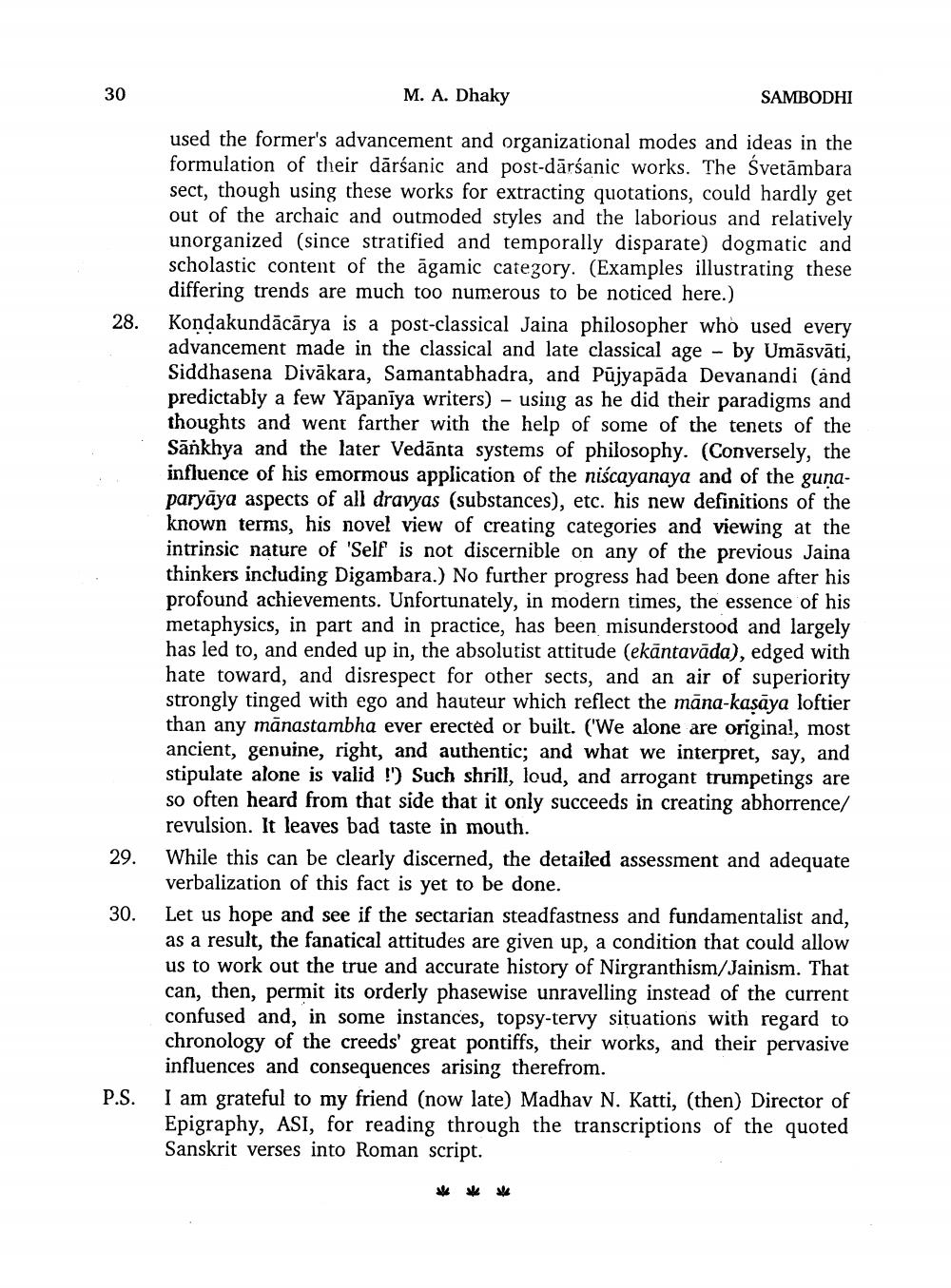________________
30
M. A. Dhaky
SAMBODHI
28.
used the former's advancement and organizational modes and ideas in the formulation of their dārśanic and post-dārśanic works. The Svetāmbara sect, though using these works for extracting quotations, could hardly get out of the archaic and outmoded styles and the laborious and relatively unorganized (since stratified and temporally disparate) dogmatic and scholastic content of the āgamic category. (Examples illustrating these differing trends are much too numerous to be noticed here.) Kondakundācārya is a post-classical Jaina philosopher who used every advancement made in the classical and late classical age - by Umāsvāti, Siddhasena Divākara, Samantabhadra, and Pujyapāda Devanandi (and predictably a few Yāpaniya writers) – using as he did their paradigms and thoughts and went farther with the help of some of the tenets of the Sankhya and the later Vedānta systems of philosophy. (Conversely, the influence of his emormous application of the niscayanaya and of the gunaparyāya aspects of all dravyas (substances), etc. his new definitions of the known terms, his novel view of creating categories and viewing at the intrinsic nature of 'Self is not discernible on any of the previous Jaina thinkers including Digambara.) No further progress had been done after his profound achievements. Unfortunately, in modern times, the essence of his metaphysics, in part and in practice, has been misunderstood and largely has led to, and ended up in, the absolutist attitude (ekāntavāda), edged with hate toward, and disrespect for other sects, and an air of superiority strongly tinged with ego and hauteur which reflect the mana-kasāya loftier than any manastambha ever erected or built. ('We alone are original, most ancient, genuine, right, and authentic; and what we interpret, say, and stipulate alone is valid !') Such shrill, loud, and arrogant trumpetings are so often heard from that side that it only succeeds in creating abhorrence/ revulsion. It leaves bad taste in mouth. While this can be clearly discerned, the detailed assessment and adequate verbalization of this fact is yet to be done. Let us hope and see if the sectarian steadfastness and fundamentalist and, as a result, the fanatical attitudes are given up, a condition that could allow us to work out the true and accurate history of Nirgranthism/Jainism. That can, then, permit its orderly phasewise unravelling instead of the current confused and, in some instances, topsy-tervy situations with regard to chronology of the creeds' great pontiffs, their works, and their pervasive influences and consequences arising therefrom. I am grateful to my friend (now late) Madhav N. Katti, (then) Director of Epigraphy, ASI, for reading through the transcriptions of the quoted Sanskrit verses into Roman script.
29.
P.S.




